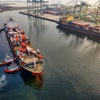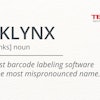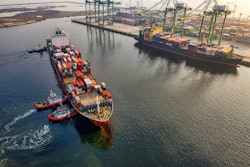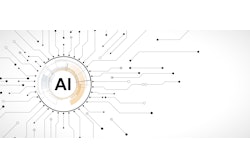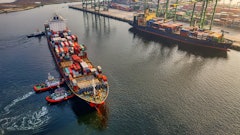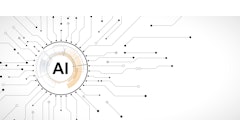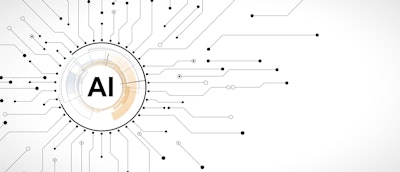
For food supply chains, adopting artificial intelligence (AI) is now an imperative. Supply disruptions from extreme weather events can cost the food industry billions annually, while high-profile recalls can wipe out hundreds of millions in brand value in days.
The regulatory landscape is also evolving rapidly. In the United States, the FDA has set guidelines to phase out certain petroleum-based synthetic dyes, leading many food companies to shift away from artificial ingredients, thus triggering changes throughout the food supply chain.
Additionally, the pending Food Safety Modernization Act (FSMA) Rule 204(d) is expected to require companies involved in the manufacturing, processing, packing, or holding of certain foods to implement record keeping and traceability systems by 2028. Similar regulations are emerging in the EU, Asia, and Latin America.
AI can deliver measurable value across traceability and visibility initiatives, enabling organizations to detect anomalies instantly, predict risks before they materialize, and automate compliance reporting. Effectively turning traceability from a manual, error-prone process into a proactive, value-creating function.
Given these transformative benefits and the mounting regulatory pressures, to avoid incurring increased costs, compliance failures, and reputational harm, organizations must act now to integrate AI-driven capabilities into their operations.
Traceability and real-time visibility: Industry’s top priorities
Traceability and real-time visibility have risen to the top of the food supply chain agenda for good reason. Regulatory requirements now demand granular tracking of ingredients, materials, and finished goods across the end-to-end supply chain. The benefits can extend far beyond compliance, for those that have AI capabilities in place.
Top consumer products (CP) companies are investing in digital capabilities that support the traceability requirements, particularly in food and beverage, according to a survey by Gartner. Fifty-two percent are in the process of realizing real-time traceability and transparency of data in the next 3-5 years, along with scenario planning. Fifty-four percent are planning decentralized supply chain networks that distribute data across multiple nodes, leveraging technologies such as blockchain.
Despite the importance of real-time visibility, only 27% of CP survey participants report having this as an existing capability and only 15% have real-time traceability capabilities today. This gap highlights both the scale of the challenge and the opportunity for early movers.
Real-time visibility can enable organizations to monitor product location, condition, and status at every stage. Traceability technologies, such as AI-enabled vision systems, create a detailed record of the origin and history of a product and its movement. Together, these capabilities are foundational for managing risk, ensuring product quality, and responding rapidly to disruptions.
AI: The catalyst for next-generation supply chains
AI is rapidly becoming the backbone of traceability and visibility solutions. Gartner data reveals that 73% of CP supply chain leaders identify AI achievement as a top driver shaping the future of their operations. Investments in AI and machine learning are accelerating, with 81% of organizations reengineering core supply chain tasks using these technologies.
 Gartner
Gartner
AI’s value in traceability is multifaceted. For example, AI-powered image recognition systems are expected to account for one-third of store product identification transactions by 2033, up from less than 1% today. Machine learning algorithms can analyze vast streams of sensor and transactional data to detect issues, predict risks, and automate compliance reporting. Blockchain, often paired with AI, provides a secure and transparent chain of custody for materials and finished goods, supporting both regulatory and consumer demands for transparency.
Several major food manufacturers have piloted solutions that connect growers, processors, distributors, and retailers via a shared, permissioned ledger. These initiatives allow for real-time sharing of product data, enabling rapid response to recalls and enhancing consumer trust.
Others are leveraging AI-driven analytics to monitor temperature and humidity throughout the cold chain, ensuring that perishable goods remain within safe parameters from farm to fork. In one case, a global food company used AI to optimize its distribution network, reducing food loss and waste while meeting regulatory reporting requirements. Such solutions not only drive resilience and mitigate risk but also help with cost savings and sustainability improvements.
Advancing food supply chain resilience with AI
The next few years will be critical for food supply chains. Those who invest now in AI capabilities will not only meet the rising tide of regulatory requirements, but also position themselves for sustainable growth and competitive differentiation.
Despite the clear business case, supply chain leaders often overestimate their effectiveness compared to C-suite perceptions and as a result, struggle to secure executive buy-in for AI investments. CP supply chain leaders are not immune to this challenge, with nearly all of those surveyed saying their supply chain had a significant impact on their companies’ competitive position, but just over half say the CEO values supply chain as much as any other function.
To bridge this gap, food supply chain leaders must translate the benefits of AI-enabled capabilities into the language of the C-suite: improved margins, reduced working capital, and enhanced risk management. As new regulatory deadlines loom, the question is not whether organizations can afford to invest in AI, but whether they can afford not to.
